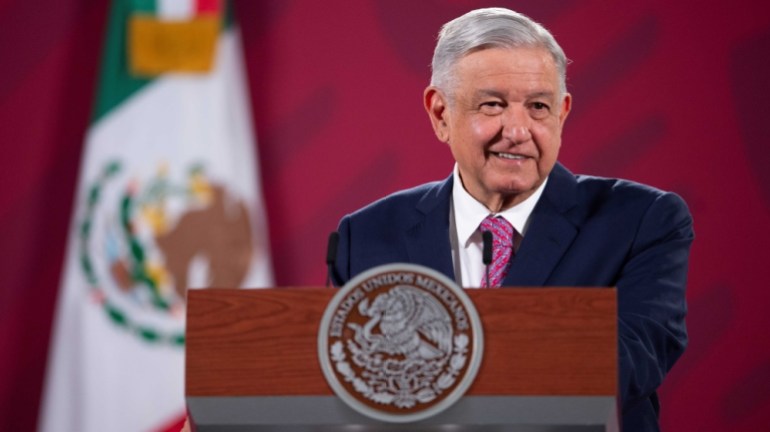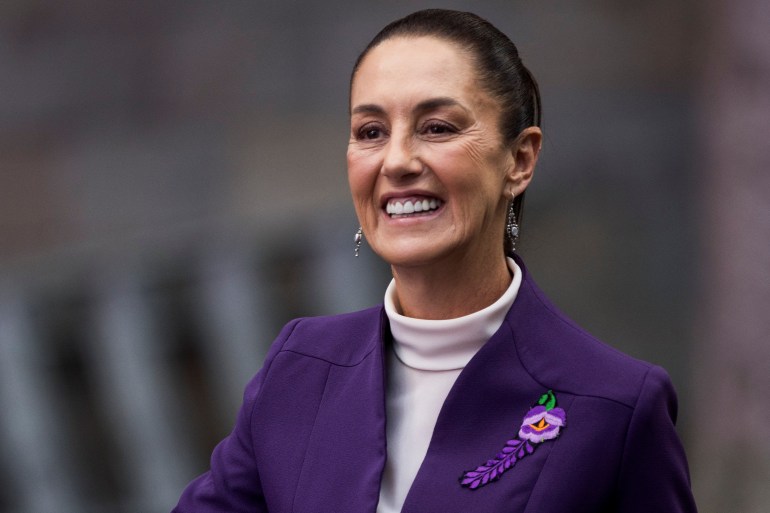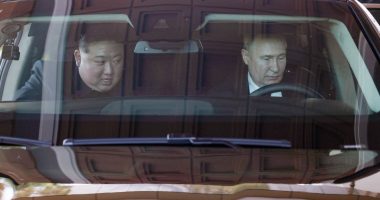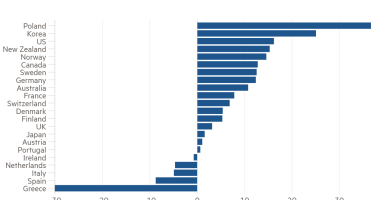On June 2, people across Mexico will head to the polls to choose a new leader, as part of the largest election in the country’s history.
The election will allow voters to decide more than 20,700 positions at the federal and local level, including 500 seats in the country’s House of Representatives and 128 in its Senate.
But much of the attention will be on the race for president, as Andres Manuel Lopez Obrador, colloquially known as AMLO, finishes his term as one of the most popular leaders in Mexico’s modern history.
Scientist and former Mexico City Mayor Claudia Sheinbaum hopes to succeed AMLO as the candidate for the political party Morena. But she faces competition from conservative rival Xochitl Galvez, a former senator and businessperson of Otomi Indigenous descent.
If Sheinbaum or Galvez succeeds in winning the presidency, it will be a historic moment for Mexico: Never before has a woman been elected president.
As Mexicans in each of the country’s 32 states prepare to go to the polls, Al Jazeera explores the stakes underpinning the election. Which issues have dominated the campaign, and how does the electoral process work?
We answer those questions and more in this explainer.

How big is the 2024 election?
About 100 million Mexicans are expected to cast their ballot in June, a record for a country that has seen voter participation decline in previous elections.
Participation in this year’s election is set to increase by approximately 11 million voters over the last presidential election in 2018.
How will the vote unfold?
According to the Instituto Nacional Electoral (INE), the country’s elections oversight body, Mexicans will vote at 170,000 polling stations (PDF) throughout the country. A voter identification card is required for participation.
Mexico has one of the largest diaspora populations in the world, with more than 11 million people living abroad. But registered voters who are outside of the country can nevertheless cast their ballots online, via post or in person at Mexican consulates.
Early voting was also allowed for those with disabilities or limited physical mobility from May 6 through May 20.
On June 2, polls will open at 8am at the earliest and close at 6pm. Voters still in line by 6pm must be allowed to cast their vote.
After polls are closed, election officers will begin counting the results, with the INE providing real-time statistics. A second count to finalise the results will be carried out from June 5 through 8.
What are the major parties?
Two main coalitions have emerged this electoral cycle in the battle for the presidency.
One is a conservative coalition composed of three parties, collectively titled “Strength and Heart for Mexico”. The second is a left-leaning coalition led by the Morena party, called “Let’s Keep Making History”.
The first includes the National Action Party (PAN), the Institutional Revolutionary Party (PRI) and the Democratic Revolution Party (PRD).
The PRI was the dominant political force in Mexico for much of the 20th century, holding power for 71 straight years, often through fraud and repression. The “Strength and Heart for Mexico” coalition brings it together with PAN, a rival conservative party that brought its ruling streak to an end in 2000.
The second coalition joins Morena — the current governing party — with the Green Ecological Party of Mexico (Verde) and the Labour Party (PT).
Another party, the Citizen’s Movement, is standing for seats on its own outside of the two main coalitions.
Are these traditional coalitions?
Carlos Bravo Regidor, a writer and political analyst based in Mexico City, says these coalitions are a novelty in Mexican politics — and a testament to AMLO’s impact on the political landscape.
“This is an entirely new political configuration that is a result of Lopez Obrador,” he said.
Regidor explained that Lopez Obrador has become so popular that erstwhile rivals have had to ally with each other in order to compete in this year’s presidential race.
“To have PRI, PAN and PRD running together is such a historical aberration. For most of Mexico’s democratic history, these three parties used to run against each other,” he explained.
“This is a testament to the impact that Lopez Obrador has had, that these three parties — historical rivals who represented the right, the left and the centre in the Mexican political spectrum — are all running together trying to defeat Lopez Obrador’s candidates.”
Who is representing the coalitions in the presidential race?
Sheinbaum is representing “Let’s Keep Making History”, the left-wing coalition. Galvez, her conservative rival, was chosen to be the presidential candidate for “Strength and Heart for Mexico”.
Meanwhile, former member of Congress Jorge Alvarez Maynez is running on behalf of the Citizens’ Movement.
What are the central issues in the campaign?
Polling shows that voters have listed issues such as security, social programmes and corruption as top priorities.
The election is also seen as a referendum on the presidency of Lopez Obrador.
Sheinbaum, his protégé, has promised to carry forward AMLO’s policies of expanding social programmes and helming large infrastructure projects like the Maya Train, a controversial rail line through the Yucatan peninsula.
Galvez has emerged as a protest candidate, promising to quell violence and corruption with a hard hand: She has criticised Lopez Obrador for saying he would address crime through “hugs, not bullets”.
Despite using the slogan during his 2018 presidential campaign, Lopez Obrador has expanded the role of the country’s military in domestic law enforcement. Galvez, for her part, has said she would start to roll back the trend of relying on the military for public security.
How has crime influenced the 2024 race?
The ongoing violence faced by the country has made itself felt during the campaign season, with an estimated 34 would-be candidates killed between September and May.
Just last month, two mayoral candidates were found dead in the northern state of Tamaulipas. And on May 17, gunmen in the southern state of Chiapas killed six people at a political rally, including another mayoral candidate.
Officials have blamed drug cartels and organised crime for the slayings, which have largely affected local races.

Who is leading the presidential race?
Most polls show Sheinbaum with a sizable lead of more than 20 points over Galvez. Maynez is considered a long shot.
AMLO’s popularity is also expected to help buoy Morena up and down the ballot, where his coalition is aiming to expand its majority in the legislature.
Why is Sheinbaum so far ahead?
Regidor, the political analyst, said Galvez has played her hand well and run a fairly dynamic campaign. But he believes Galvez’s affiliation with the PAN and PRI parties has hampered her prospects.
“All of the negative attributes you can think of, Mexican voters associate the most with the PRI and, to a lesser extent, with the PAN,” Regidor explained.
“So Xochitl has not been able to run as a candidate of change, because the idea of change is incompatible with running under the banner of the PAN and the PRI.”
In 2006, under the PAN presidency of Felipe Calderon, the government launched its controversial “war on drugs”, leaning into a militarised approach to law enforcement.
But that strategy led to an explosion of violence while doing little to stem the narcotics trade. It also fostered growing reports of military abuses, including evidence of outright collaboration between security forces and criminal groups.
The PRI, meanwhile, has long been dogged by accusations of corruption and oppression: From 1929 to 2000, it was the dominant force in Mexican politics.
The long-ruling party briefly reclaimed the presidency in 2012, with candidate Enrique Pena Nieto. But corruption scandals and dissatisfaction with his neoliberal economic policies led to the election of AMLO in 2018.
“Something that helps explain the large victory of Lopez Obrador in 2018 is the discredit of those traditional parties. In poll after poll, they ask voters: Who is the worst with corruption? The PRI. Who is the worst with violence? The PRI. Who is the worst at caring for the poor? The PRI,” said Regidor.
He added that the PRI’s lengthy history has left a lasting stink in the eyes of voters.
“The PRI has become the Chernobyl of Mexican politics. It’s just so toxic.”

What is the outgoing president’s legacy?
Lopez Obrador has been consistently ranked one of the most popular world leaders currently in power — though his election in 2018 came after two failed bids for the presidency.
Known for his outspoken personality, Lopez Obrador has made addressing poverty a central pillar of his presidency.
But he has also pushed controversial initiatives that critics say aim to diminish the independence of the country’s judiciary and election oversight body. In addition, he has expanded the role of the military to include infrastructure projects and public safety initiatives, despite concerns about human rights abuses.
His critics have also expressed disappointment at his failure to tamp down on crime and address the thousands of missing persons cases in Mexico, which surpassed 100,000 under his presidency.
The majority of those cases were logged after the country launched its “war on drugs” in 2006. Providing answers to the families of the disappeared was a promise on which Lopez Obrador campaigned in 2018.
Why can’t AMLO run for a second term?
During his time in office, Lopez Obrador has achieved something increasingly elusive in global politics: consistently high levels of popularity.
According to a poll tracker by the Americas Society and the Council of the Americas, AMLO’s approval, while down from an early high of 81 percent, has never dropped below 60 percent.
Given that level of popularity, why can’t Lopez Obrador run for a second term himself?
The answer is simple: Mexico’s constitution explicitly limits the presidency to a single term.
That is a legacy of the Mexican Revolution, which was fought after the decades-long rule of dictator Porfirio Diaz, known as the Porfiriato. His leadership turned “no reelection” into a common rallying cry.
Read More: World News | Entertainment News | Celeb News
Al Jazeera








